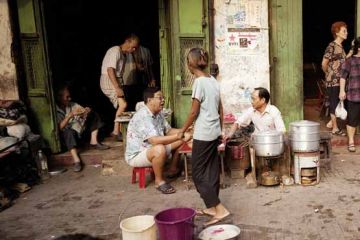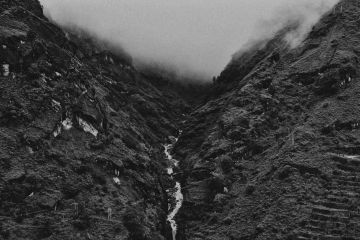The Ijen volcano in East Java, Indonesia is
home to one of the largest sulphur mines in the world. Several hundred men from
surrounding areas undertake the task of retrieving blocks of sulphur from the
crater of the volcano. It is the only sulphur mine in the world still quarried
manually. Miners trek down the perpendicular path from the rim of the volcano
to the crater below and trace back the path with loads of 80-90 kg of sulphur.
For this arduous task, undertaken twice a day by each min





